In today’s fast-paced world, unforeseen situations such as emergencies, lockouts, or misplaced keys can create significant inconvenience. Keeping a spare key hidden effectively is a practical solution to alleviate the stress associated with such occurrences. The challenge of how to hide a spare key for an apartment is particularly unique for apartment dwellers who may not enjoy the luxury of outdoor space or have to contend with shared entrances and corridors.
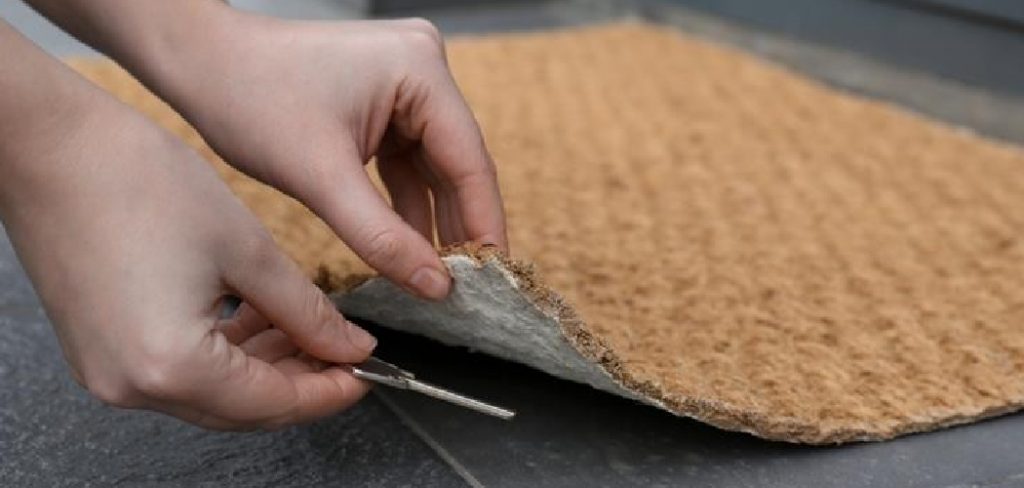
Unlike homeowners with gardens or private entryways, apartment residents must employ more creative and cautious strategies to ensure their spare key is both accessible and undiscoverable to outsiders. Throughout this article, we will explore innovative and secure solutions tailored for apartment living, ranging from covert indoor hideouts to advanced technological options. These methods offer peace of mind and provide safe, reliable access when it’s most needed.
Why Not to Hide Your Key in Obvious Places
Hiding your spare key in obvious places comes with significant risks, particularly in apartment settings with high foot traffic and limited privacy. Common mistakes include placing keys under doormats or flower pots—these are common-standard locations that burglars routinely check first. Similarly, hiding keys in mailbox areas or taping them to doorframes or windowsills exposes them to anyone curious, as these spots are easily noticeable and provide minimal security.
Even the use of fake rocks or other seemingly clever hiding devices can be counterproductive, especially in shared outdoor spaces or corridors. Such items are often easily recognizable and stand out in maintained apartment environments, offering little more security than a welcome mat. The abundance of people regularly passing by apartment complexes further compromises these obvious hiding places, increasing the likelihood of discovery by the wrong person.
Poor key-hiding choices increase the risk of burglary or unauthorized access and nullify the intended security benefits of having a spare key in the first place. A hidden key is only beneficial when it is safely concealed from prying eyes; otherwise, it becomes an open invitation for invaders.
With multiple residents and potentially unmonitored access, apartments demand more discreet and thoughtful solutions to maintain the safety and privacy of your living space. Being aware of these mistakes helps you proactively choose safer alternatives for hiding your spare key, ensuring that it remains a reliable resource without compromising security.
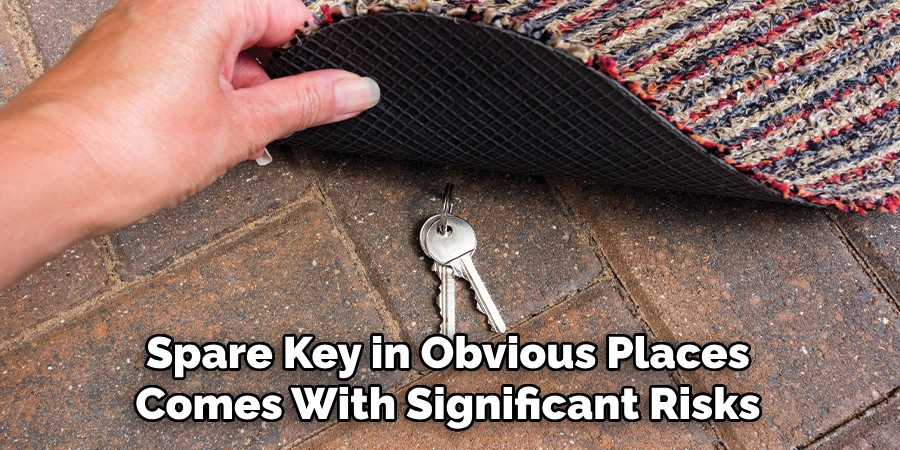
How to Hide a Spare Key for An Apartment: Creative Places to Hide a Spare Key Inside the Apartment
Inside a Fake Household Object
Key Hiding Products: For a clandestine yet effective approach, consider investing in disguised household items designed specifically to store keys. These ingenious products, like fake electrical outlets, hollowed-out books, or clocks with concealed compartments, offer both practicality and security.
Popular online marketplaces such as Amazon or specialty security stores carry an extensive selection of these items. Installation or placement is typically straightforward, often involving simply adhering to manufacturer instructions to ensure the object blends naturally with your existing apartment decor.
DIY Alternatives: For those inclined toward a more personal touch, creating a hollowed-out item yourself can be both cost-effective and rewarding. Start by selecting an item that harmonizes with your décor, such as a picture frame or a decorative sculpture. Carefully create a space within the chosen object to house the key, ensuring it remains inconspicuous. Use materials such as foam or clay to hold the key securely and decorate the object to seamlessly integrate it into your space, reducing the risk of attracting unwelcome suspicion.
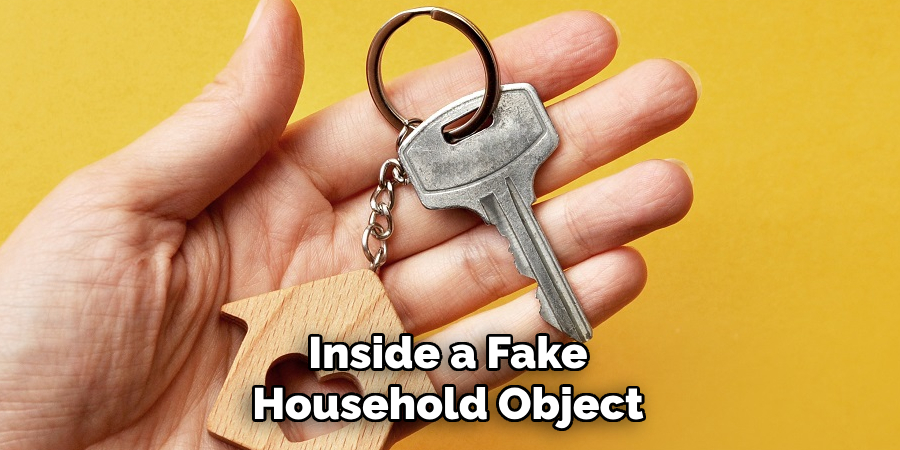
In an Unused Drawer or Cabinet
Choosing the Right Location: When hiding a spare key within existing furniture, subtlety and obscurity are crucial. Seek out a little-used drawer, cabinet, or box hidden within a utility closet, under a sink, or tucked away in a cluttered area. Avoid locations that are obvious targets during a burglary, such as drawers that also house valuables like jewelry or cash. By selecting a spot that blends into the mundane clutter of everyday items, you maintain an extra layer of security, ensuring your key is more of an afterthought to potential intruders.
Behind a Wall Hanging or Art
Hiding Behind Pictures or Mirrors: Another inventive method for concealing a spare key involves attaching it discreetly behind a picture frame or mirror. Use strong tape or Velcro to secure the key, ensuring it is stable yet easily accessible in case of need. Choose a wall hanging that is placed at eye level or higher, reducing the chance of accidental discovery, and ensure it remains flush against the wall to prevent detection. This strategic positioning allows the key to remain unseen yet within reach when necessary.
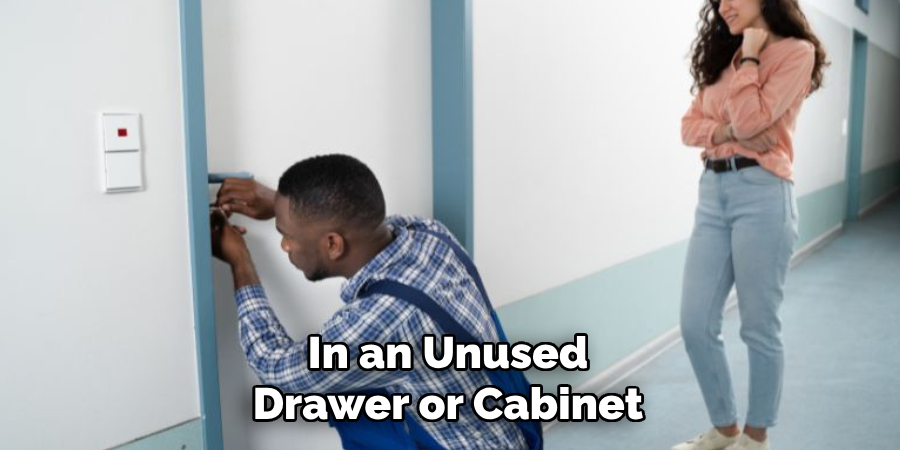
Inside a Plant Pot (Indoors)
Using Fake or Real Plants: For those with an affinity for greenery, hiding a key within a plant pot serves as a subtle solution. Whether utilizing a fake or real plant, you can place the key at the pot’s base, either under the soil in a small waterproof bag or beneath a decorative rock. It’s essential to mark the key’s location mentally or with a subtle sign to prevent misplacement or being buried too deeply over time. This method capitalizes on aesthetic harmony and ensures that the key remains accessible while hidden from plain sight.
Discreet Outdoor Hiding Spots in an Apartment Complex
Under a Balcony or Deck (If Available)
Safe Placement: Attaching a magnetic key holder to the underside of a balcony or deck can provide a clever and secure hiding spot. Passersby typically overlook this location yet offers easy access when needed. When choosing a spot, ensure that the key holder is sufficiently hidden from plain sight, perhaps tucked away in a corner or behind a structural element that naturally conceals it.
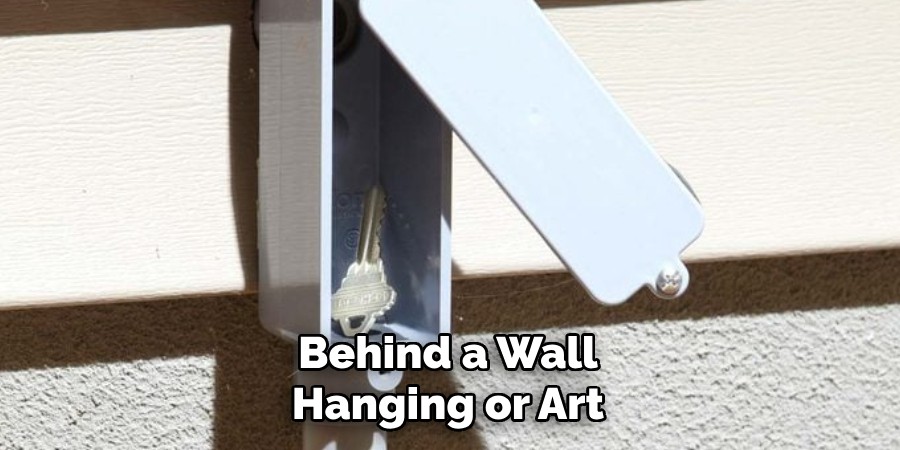
Securing the Key: It is crucial to use a magnetic case designed to withstand outdoor elements, protecting the key from moisture, dirt, and prying eyes. By securing the key in a robust case, you ensure it will remain in place until needed and will not be susceptible to weather-related degradation or discovery by strangers.
In a Lockbox
Types of Lockboxes: Lockboxes are another reliable option for securing a spare key outdoors. These come in both wall-mounted and portable varieties, often equipped with a code combination for access. Wall-mounted lockboxes can be discretely installed on a fence, or in an out-of-the-way area of the building where they blend seamlessly with the environment.
Benefits of Using a Lockbox: A lockbox adds an extra layer of security by requiring a code to access the key, thereby deterring unauthorized access. When selecting a combination, opt for a code that is both memorable and secure. Avoid easily guessed sequences such as birthdays or repetitive numbers, and ensure the code is changed periodically for added security.
Under Stairwells or Railings
Using Structural Features: Stairwells and railings offer additional opportunities for discreet key hiding. By attaching a magnetic key holder to the underside of stairwells or railings, you can take advantage of these structural features to keep the key well-hidden. Ensure that the key is placed in such a way that minimizes visibility from common vantage points.
Safety Tips: Before settling on a location, check the visibility from multiple angles to confirm that the key remains unobtrusive. Additionally, select a key holder made from weather-resistant materials to ensure that it withstands the elements and keeps the key safe over time.
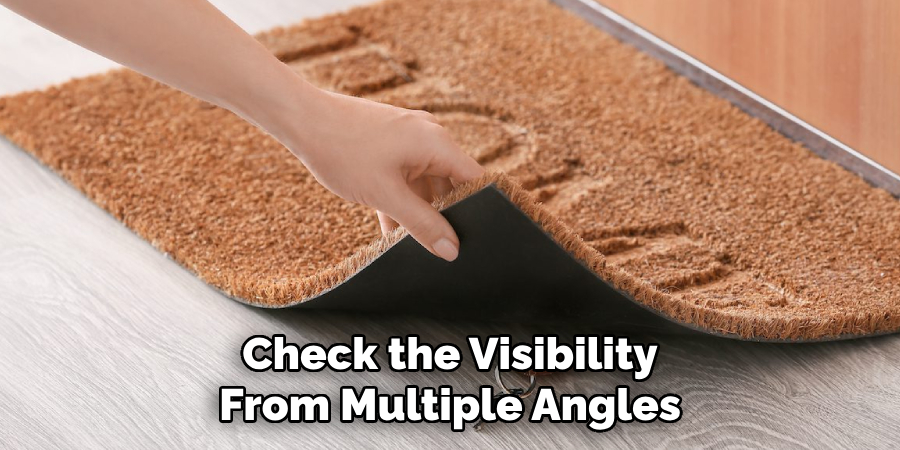
In a Neighbor’s Apartment (Trusted Contact)
Benefits of Entrusting a Neighbor: Sometimes the safest option is not to hide the key at all, but rather to entrust it to a reliable neighbor. Establishing a mutual agreement with a trustworthy neighbor can provide peace of mind, as the key is safely kept indoors rather than hidden outside.
Choosing the Right Neighbor: When selecting a neighbor, ensure you have a good standing relationship and trust their integrity. It is advisable to formalize the arrangement by discussing under what circumstances they should provide access to the key—typically emergencies—clear communication is key to maintaining a reliable and mutually beneficial agreement.
Digital Alternatives: Keyless Entry and Smart Locks
Smart Lock Installation
Smart locks represent a modern solution to home security, offering the convenience of accessing your apartment using a code, mobile app, or even fingerprint recognition, thus eliminating the need for traditional keys. They integrate seamlessly with your lifestyle, allowing entry through digital means. Popular smart lock brands such as August, Schlage, and Yale provide various features tailored to different needs.
These locks often come with remote access capabilities, enabling you to lock or unlock your door from anywhere via a smartphone app. Additionally, features like auto-lock ensure that your door secures itself after a predefined period, and guest access codes allow temporary access for friends or service personnel without handing over a physical key.
Benefits of Smart Locks
The primary advantage of smart locks is enhanced security. Removing physical keys from the equation mitigates the risks associated with key loss or theft. Moreover, changing access codes provides an easy solution for revoking or granting temporary access without the hassle of duplicating keys. This is especially useful if you frequently have visitors or short-term tenants. Smart locks also offer the peace of mind that comes with knowing you can change codes quickly in the event of unauthorized access concerns.
Setting Up Smart Lock Backups
While smart locks offer enhanced convenience and security, having a contingency plan is crucial. Creating secure digital backups by sharing access codes with trusted individuals ensures that you’re not locked out in an emergency. It’s advisable to keep a written record of access codes in a safe place, such as a locked file cabinet or digital password manager.
Additionally, maintaining a supply of backup batteries is essential to avoid being caught off-guard if the lock runs out of power. Some smart locks also come with a physical key entry as a fallback, which can be a reliable last resort should all other digital methods fail.
Ensuring Safety and Security When Hiding a Key
Regularly Changing Key Locations
To maximize security when hiding a key, it’s important to regularly change its location. By frequently moving the key to different spots, you diminish the chances of anyone discovering it by accident. Ideally, aim to relocate your spare key every few weeks or months, ensuring that it remains in unforeseen, unsearched places. This unpredictability acts as an effective deterrent against potential intruders who might stumble upon its hiding spot.
Use of Discreet Key Holders
Another vital tactic for keeping your key hidden from sight is selecting inconspicuous key holders. Opt for magnetic boxes or cleverly disguised items designed not to attract attention. These holders can be camouflaged with outdoor elements or integrated into everyday objects, making them less likely to be noticed.
Alerting Trusted Individuals
While it’s crucial to keep the key’s existence and location a secret from most people, informing a few close, trusted friends or family members provides an extra layer of security. These individuals should only be told the key’s location in emergencies, ensuring they can assist you if you’re ever locked out.
Double-Locking Entryways
Even with a spare key securely hidden, it’s wise to bolster your home security by using additional locks that the spare key can’t access. Installing secondary measures like deadbolts ensures that, should someone find and use your spare key, they still cannot gain unrestricted entry into your home. This dual-locking system serves as both a safety net and a psychological deterrent.
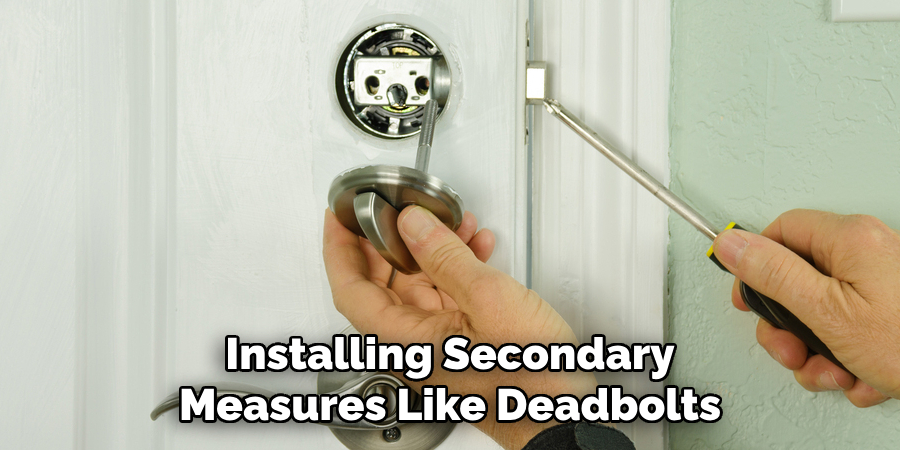
Conclusion
In conclusion, understanding how to hide a spare key for an apartment safely is critical to ensuring your home remains secure yet accessible in emergencies. Whether you choose to hide the key discreetly within your apartment, entrust it to a reliable neighbor, or opt for advanced smart lock technology, it is crucial to thoughtfully consider the security implications.
Avoid the common, predictable hiding spots that potential intruders could easily discover, like under doormats or flowerpots. Regularly assess the security of your entry points to adapt to new threats and stay ahead. You ensure added peace of mind by incorporating a well-planned strategy, such as a lockbox or a trusted neighbor aware of your key’s hiding spot. Embrace these best practices and continually reflect on your approach to maintaining robust apartment security in all scenarios.
About
Safety Fic is a distinguished figure in the world of Diy design, with a decade of expertise creating innovative and sustainable Diy solutions. His professional focus lies in merging traditional craftsmanship with modern manufacturing techniques, fostering designs that are both practical and environmentally conscious. As the author of diy, Safety Fic delves into the art and science of Safety Fic-making, inspiring artisans and industry professionals alike.
Education RMIT University
(Melbourne, Australia) Associate Degree in Design (Safety Fic) Focus on sustainable design, industry-driven projects, and practical craftsmanship. Gained hands-on experience with traditional and digital manufacturing tools, such as CAD and CNC software.
Nottingham Trent University
(United Kingdom) Bachelor’s in diyfastly.com and Product Design (Honors) Specialized in product design with a focus on blending creativity with production techniques. Participated in industry projects, working with companies like John Lewis and Vitsoe to gain real-world insights.
Publications and Impact
In diy, Safety Fic his insights on indoor design processes, materials, and strategies for efficient production. His writing bridges the gap between artisan knowledge and modern industry needs, making it a must-read for both budding designers and seasoned professionals.
